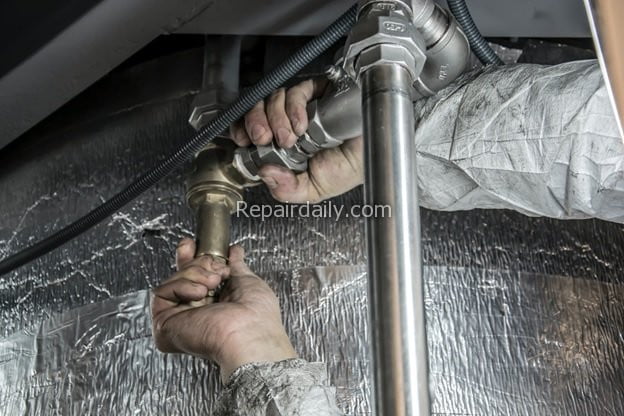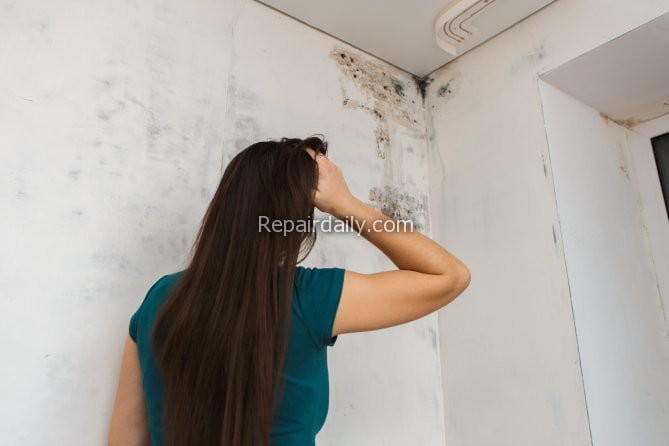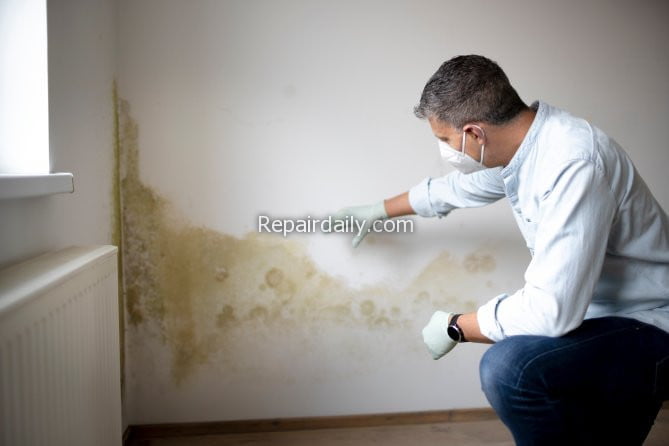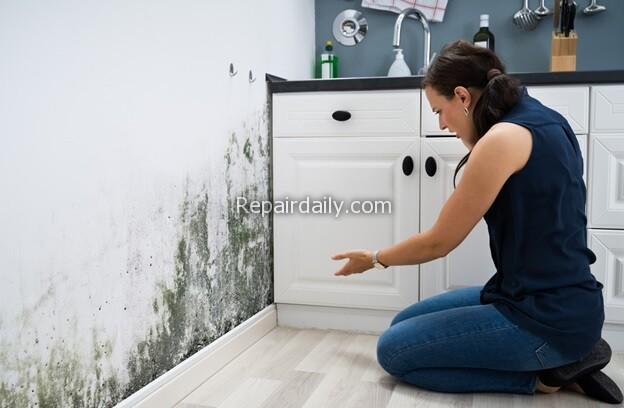
Water damage in homes and businesses can occur unexpectedly and may result from a variety of factors, such as flooding, leaking pipes, or heavy rain. While immediate action can prevent further damage, many property owners don’t realize just how quickly water damage can lead to mold growth. Understanding how fast water damage can turn into mold—and recognizing the signs of mold after water leak—is critical in taking quick action to mitigate the damage and protect your property.
Why Does Water Damage Lead to Mold?
Mold thrives in damp, humid environments, and water damage creates the perfect breeding ground for it. Mold spores are naturally present in the air, but they require moisture to grow. When water enters an area and saturates surfaces like wood, drywall, or carpet, it provides the moisture mold spores need to proliferate. If the moisture remains for too long without proper drying, mold can begin to grow within 24 to 48 hours, rapidly spreading and causing both aesthetic and health concerns.
The Timeline: How Quickly Does Mold Appear After Water Damage?
Mold doesn’t waste time. Once water is absorbed into building materials, mold growth can begin in as little as 24 hours. However, the exact time frame varies depending on several factors, including:
- Humidity Levels: High humidity accelerates mold growth. Homes with poor ventilation, basements, or areas affected by leaks are particularly vulnerable.
- Temperature: Mold grows best in warm temperatures, typically between 60-80°F (15-27°C). The warmer the environment, the faster mold can appear.
- Material Type: Certain materials absorb water faster than others. For instance, porous materials like wood, drywall, and carpet can retain moisture longer, providing mold with the ideal conditions to grow.
- Amount of Water: The extent of the water damage also plays a significant role. A small leak might take longer to cause visible mold growth compared to a major flood, which can rapidly saturate building materials and foster mold development.

Signs of Mold After Water Leak
When water damage occurs, it’s essential to keep an eye out for signs of mold after water leak. If you notice these indicators, mold growth may already be underway:
- Visible Growth: Mold typically appears as black, green, or white patches on walls, ceilings, and floors. It may look fuzzy or slimy, and in the case of water damage, it may appear around the area where the leak occurred.
- Musty Odor: A strong, musty smell is often one of the first signs of mold presence. The odor is caused by the mold spores releasing volatile organic compounds (VOCs) into the air.
- Staining and Discoloration: If water stains or discoloration appear on walls, ceilings, or floors, it could be a sign that mold is growing behind or under the surface.
- Peeling or Bubbling Paint/Wallpaper: Water-damaged areas often cause paint or wallpaper to peel or bubble. This is a result of moisture being trapped beneath the surface, which can also promote mold growth.
- Increased Allergy Symptoms: If you or others begin to experience sneezing, coughing, or watery eyes in areas where there’s water damage, it could be due to mold spores in the air.
How Mold Affects Your Property

The growth of mold after water damage can have serious consequences for both your property and your health:
- Structural Damage
Mold, particularly when left unchecked, can weaken the structural integrity of a building. Mold eats away at organic materials, like wood and drywall, causing them to rot. Over time, this can result in weakened walls, floors, and ceilings that are no longer safe to occupy. For homeowners, this means costly repairs and potential insurance claims.
- Health Risks
Mold exposure can lead to a range of health problems, especially for individuals with respiratory issues, allergies, or weakened immune systems. Some health risks associated with mold exposure include:
- Respiratory problems, such as coughing, wheezing, and shortness of breath
- Skin irritation or rashes
- Eye irritation, including redness and watering
- Sinus congestion or headaches
- Aggravation of asthma or other pre-existing conditions
The longer mold is allowed to grow, the more harmful its effects can become, potentially leading to chronic health issues.
- Odor and Aesthetic Issues
Mold doesn’t just cause structural damage and health problems; it also affects the appearance and smell of your property. The musty odor can permeate furniture, carpets, and even your clothing. Additionally, the visual impact of mold growth can be distressing, making your property look unkempt and potentially lowering its value.
Preventing Mold Growth After Water Damage
The key to preventing mold growth is timely intervention. Here’s how to prevent mold after experiencing water damage:
- Act Fast
If you experience water damage, start drying the affected area immediately. Mold needs moisture to thrive, so the faster you remove water from the environment, the less chance mold has to grow. Use fans, dehumidifiers, and other drying equipment to speed up the process.
- Properly Dry Wet Areas
Ensure that materials like carpeting, drywall, and insulation are completely dried out. In cases of extensive water damage, these materials may need to be replaced to fully prevent mold growth.
- Ventilate the Area
Improving air circulation is crucial in preventing mold. Open windows, use fans, and consider installing a dehumidifier in the affected area to reduce moisture levels and speed up the drying process.
- Remove Damaged Materials
In some cases, the best way to prevent mold is to remove the materials that have absorbed water. Carpets, drywall, and wood that have been saturated with water should be discarded and replaced, as they may harbor mold even if they appear dry on the surface.
- Regular Inspections
After water damage, it’s important to conduct regular inspections of the affected areas. Look for signs of mold and moisture, and don’t hesitate to call in a professional if you suspect mold has begun to develop.
The Importance of Professional Mold Remediation
While DIY methods can be effective for small leaks, professional mold remediation services are often required for larger issues. A professional team can help identify hidden mold, assess the full extent of the damage, and ensure that all affected areas are thoroughly treated to prevent future outbreaks.

Key Takeaways:
- Speed is Crucial: Mold can start growing in as little as 24-48 hours after water damage, so it’s essential to act quickly.
- Watch for Signs: Keep an eye out for visible mold, musty odors, and discoloration in the affected area.
- Preventive Measures: Immediately dry out the affected area, increase ventilation, and remove damaged materials to stop mold growth.
- Health Risks: Mold poses significant health risks, including respiratory problems and allergies, making early action even more important.
- Professional Help: For significant damage, consider hiring professionals to ensure thorough mold remediation.
Water damage can be a serious issue, but understanding the risks and taking immediate action can prevent mold from becoming a bigger problem. By staying vigilant and acting quickly, you can protect both your property and your health from the long-term effects of mold growth.
I'm so excited to tackle all my home improvement projects! From plumbing to DIY and cleaning - I'm ready to get down to work! #homerepair #homecleaning #plumbing #diy #fixerupper #realestate #renovation #interiordesign #farmhouse #diy #homedecor #hgtv #home #farmhousedecor #modernfarmhouse #farmhousestyle #fixerupperstyle #fixandflip #homerenovation #realestateinvesting #beforeandafter #homesweethome #remodel #realestateinvestor #interior #realtor #joannagaines #flippinghouses #countryliving #design #homedesign #farmhouseinspired #investmentproperty #bhghome #renovationproject #farmhousekitchen #homeimprovement #farmhouseliving #cottagestyle #decor #realestateagent #magnoliahome #homeinspo #magnoliamarket #kitchendesign #dreamhome #shiplap #construction #houseflipping #investor #farmhousedesign #architecture #farmhousechic #homereno #rusticdecor #reno #kitchenremodel #webuyhouses #magnoliatable #rentalproperty #fixerupperinspired #newhome #interiors #homeremodel

